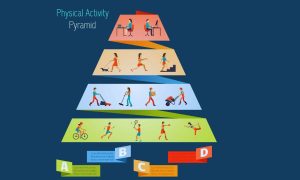Walking is one of the most natural and beneficial forms of exercise. It requires no special equipment, can be done almost anywhere, and is suitable for people of all ages. Many people walk to stay fit, reduce stress, or enjoy the outdoors. One common question for those who walk for fitness or leisure is, “How long does it take to walk 11 miles?”
This guide will help you understand the factors that influence walking speed and time, provide tips for walking longer distances, and offer practical advice for planning an 11-mile walk.
Factors Affecting Walking Speed
Several factors can affect how long it takes to walk 11 miles. These include:
- Fitness Level: Your overall fitness level plays a significant role. People who walk regularly and are in good physical shape tend to walk faster and tire less quickly.
- Walking Pace: Walking speed varies from person to person. On average, a brisk walking pace is about 3 to 4 miles per hour. Some may walk faster, while others may walk more slowly.
- Terrain: The type of terrain impacts walking speed. Walking on flat, even surfaces like sidewalks or trails is easier and faster than walking on uneven, rocky, or hilly terrain.
- Weather Conditions: Weather can influence your walking speed. Walking in extreme heat, cold, rain, or strong winds can slow you down.
- Health and Age: Younger individuals and those in good health typically walk faster than older adults or those with health issues.
- Footwear and Gear: Comfortable, well-fitting shoes and appropriate clothing can enhance your walking experience and speed.
- Rest and Hydration: Taking breaks and staying hydrated are essential, especially for long walks. Fatigue and dehydration can slow you down.
Estimating Walking Time for 11 Miles
To estimate how long it will take to walk 11 miles, let’s consider different walking speeds:
- Slow Pace (2 miles per hour): At this pace, it would take approximately 5.5 hours to walk 11 miles.
- Moderate Pace (3 miles per hour): At this pace, it would take about 3 hours and 40 minutes to walk 11 miles.
- Brisk Pace (4 miles per hour): At this pace, it would take around 2 hours and 45 minutes to walk 11 miles.
These estimates are based on continuous walking without breaks. In reality, most people will take short breaks for rest, hydration, or snacks, which will add to the total time.
Preparing for an 11-Mile Walk
1. Plan Your Route
Choose a route that suits your fitness level and preferences. Consider the terrain, elevation, and availability of rest stops or amenities along the way. Use maps or walking apps to plan your route and ensure it covers the desired distance.
2. Wear Appropriate Clothing and Footwear
Wear comfortable, moisture-wicking clothing and well-fitting walking shoes with good support. Consider the weather conditions and dress in layers if needed. Don’t forget a hat, sunglasses, and sunscreen for sun protection.
3. Stay Hydrated and Nourished
Carry enough water to stay hydrated throughout your walk. Depending on the weather and your pace, you may need more or less water. Bring snacks like energy bars, fruits, or nuts to maintain your energy levels.
4. Warm-Up and Cool Down
Begin your walk with a warm-up to prepare your muscles and prevent injuries. Stretching exercises and a few minutes of brisk walking can help. After completing your walk, take time to cool down and stretch again to aid recovery.
5. Pace Yourself
Start at a comfortable pace and gradually increase your speed if you feel capable. Listen to your body and take breaks as needed. Walking 11 miles is a significant distance, so pacing yourself is essential to avoid exhaustion.
6. Safety Tips
- Walk in well-lit, populated areas if possible.
- Inform someone about your route and estimated time of return.
- Carry a phone for emergencies.
- Be aware of your surroundings and follow pedestrian safety rules.
Benefits of Walking 11 Miles
Walking 11 miles offers numerous physical and mental health benefits:
- Improves Cardiovascular Health: Walking is excellent for your heart. It helps lower blood pressure, reduce cholesterol levels, and improve overall cardiovascular health.
- Boosts Mental Well-Being: Walking reduces stress, anxiety, and depression. It releases endorphins, which are natural mood lifters.
- Aids Weight Management: Walking burns calories, helping you maintain or lose weight. The number of calories burned depends on your weight, pace, and duration of walking.
- Enhances Muscle Strength and Endurance: Walking engages various muscle groups, improving strength and endurance over time.
- Supports Joint Health: Regular walking can improve joint flexibility and reduce the risk of arthritis and other joint-related issues.
- Promotes Better Sleep: Physical activity, such as walking, can improve sleep quality and help you fall asleep faster.
Practical Tips for Long Walks
Long walks can be both challenging and rewarding. Whether you’re preparing for a long-distance walk like 11 miles or simply looking to extend your daily walks, the following practical tips can help you make the most of your experience.
1. Gradual Increase in Distance
If you’re new to long-distance walking, start with shorter distances and gradually increase your mileage. This approach helps your body adapt to the physical demands and reduces the risk of injury. Aim to increase your distance by about 10% each week.
2. Proper Footwear and Gear
Wearing the right shoes is crucial for long walks. Choose well-fitted walking shoes with good arch support and cushioning. Break in new shoes with shorter walks before attempting longer distances. Also, consider moisture-wicking socks to prevent blisters and keep your feet dry.
3. Plan Your Route
Select a route that is safe and suits your fitness level. Consider the terrain, elevation, and availability of rest stops or amenities along the way. Using maps or walking apps can help you plan an efficient and enjoyable route.
4. Hydration and Nutrition
Staying hydrated is essential, especially for long walks. Carry enough water to last the entire distance, or plan your route around places where you can refill. Bring snacks like energy bars, fruits, or nuts to maintain your energy levels. Eating a balanced meal before your walk can also provide sustained energy.
5. Pace Yourself
Start your walk at a comfortable pace and gradually increase your speed if you feel capable. Avoid starting too fast to prevent early fatigue. Listen to your body and take breaks as needed. Walking at a steady, sustainable pace will help you complete long distances more comfortably.
6. Warm-Up and Cool Down
Begin your walk with a warm-up to prepare your muscles and prevent injuries. Stretching exercises and a few minutes of brisk walking can help get your body ready. After completing your walk, take time to cool down and stretch again to aid recovery and reduce muscle soreness.
7. Stay Mindful
Practicing mindfulness while walking can enhance the experience and provide mental health benefits. Pay attention to your surroundings, the rhythm of your steps, and your breathing. Being present in the moment can make your walk more enjoyable and meditative.
8. Join a Walking Group
Walking with others can be motivating and enjoyable. Look for local walking groups or clubs in your area. Group walks provide social interaction and support, making long distances more manageable and fun.
9. Track Your Progress
Use a pedometer, fitness tracker, or mobile app to monitor your walking distance, speed, and time. Tracking your progress can help you set goals, stay motivated, and celebrate your achievements. It can also provide insights into your walking patterns and areas for improvement.
10. Mix Up Your Routes
Varying your walking routes keeps things interesting and prevents boredom. Explore new trails, parks, or neighborhoods to enjoy different scenery and challenges. Changing your route can also introduce new terrains, which can enhance your overall fitness.
11. Safety First
- Walk in well-lit, populated areas if possible.
- Inform someone about your route and estimated time of return.
- Carry a phone for emergencies.
- Be aware of your surroundings and follow pedestrian safety rules.
- Wear reflective gear if walking in low-light conditions.
12. Listen to Your Body
Pay attention to any signs of discomfort or pain during your walk. Ignoring minor issues can lead to more serious injuries. If you experience pain, slow down, take a break, or consider shortening your walk. Consult a healthcare professional if you have persistent pain or concerns.
By following these practical tips, you can enjoy the many benefits of long walks while minimizing the risk of injury and maximizing your overall experience. Happy walking!
Frequently Asked Questions (FAQs) about Walking 11 Miles
How long does it take to walk 11 miles?
It typically takes about 3 to 4 hours to walk 11 miles at a moderate pace.
Does age affect how fast I can walk?
Yes, age can affect your walking speed. Older individuals may walk slower due to decreased fitness levels and health conditions.
What should I wear for long-distance walking?
Wear comfortable, moisture-wicking clothing and well-fitting shoes with good support and cushioning.
How can walking improve my health?
Walking improves cardiovascular health, aids in weight management, boosts mood, enhances joint health, and strengthens the immune system.
Is there an ideal time of day for walking 11 miles?
The ideal time of day depends on personal preference and weather conditions. Early morning or late afternoon are often cooler and more comfortable times for walking.
Should I eat differently if I’m planning to walk more?
Eating a balanced diet with sufficient carbohydrates, proteins, and fats can help fuel your long walks. Stay hydrated and consider snacks for longer walks.
Can fitness trackers help me with my walks?
Yes, fitness trackers can help monitor your pace, distance, and heart rate, providing useful data to improve your walking routine.
What precautions should I take for safety?
Wear visible clothing, plan your route, stay hydrated, listen to your body, and inform someone about your walking plans.
























